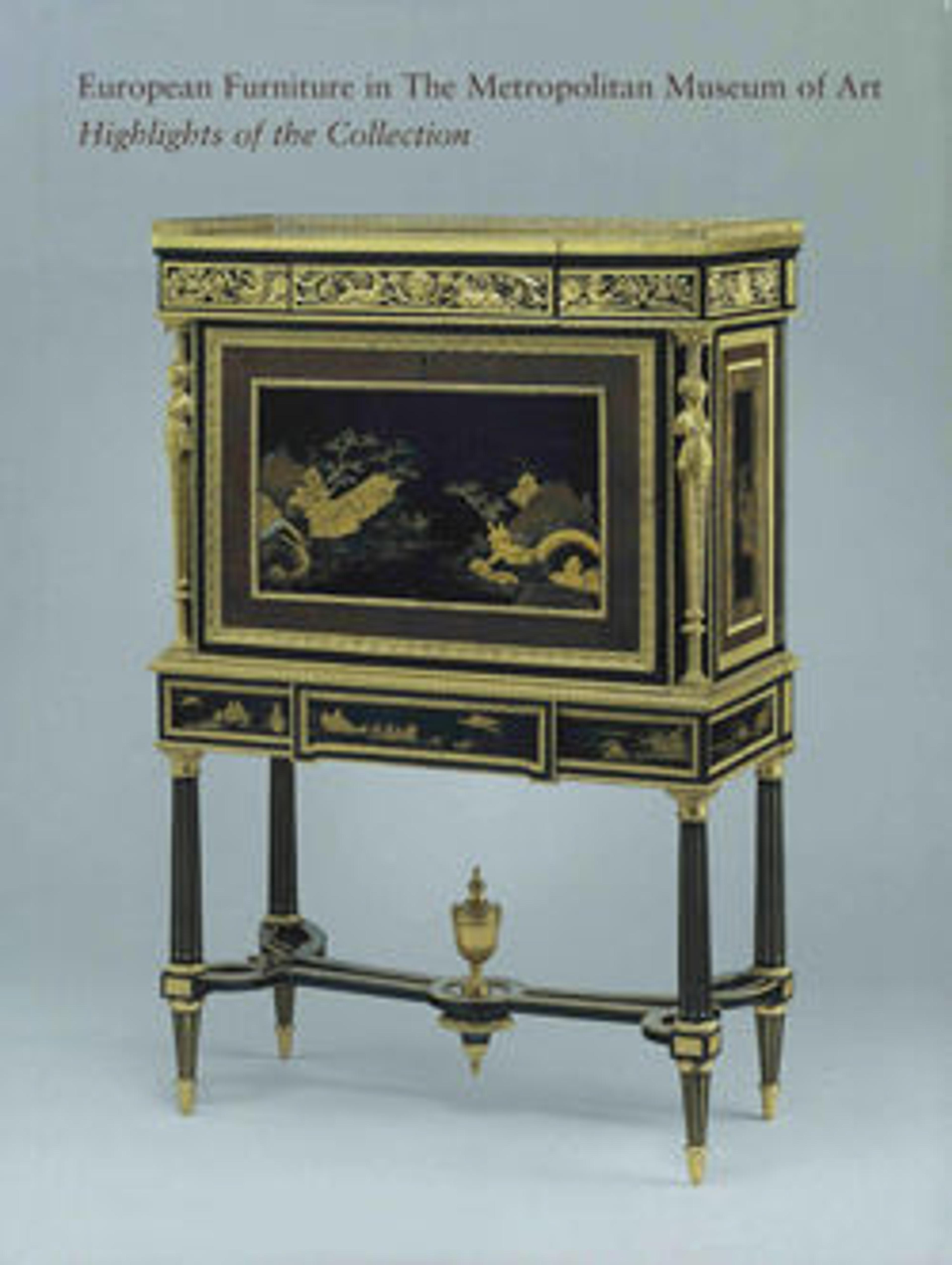Pair of tripod stands (athèniennes)
The athénienne was a completely new, multifunctional type of French Neoclassical furniture derived from the tripod-shaped perfume burner of classical antiquity. It could be used as a washstand, perfume burner, food warmer, and jardinière. It was invented, probably in 1773, by Jean-Henri Eberts, editor of Le Monument du Costume (a series of etchings on the history of French costume in the eighteenth century), and was first advertised in L'avantcoureur in September 1773. Only a single engraving of the advertisement, now in the Library of the University of Warsaw, appears to have survived (Daniëlle O. Kisluk-Grosheide, Wolfram Koeppe, and William Rieder. European furniture in the Metropolitan Museum of Art: highlights of the collection. New York and New Haven, 2006, fig. 97). Eberts stated in his advertisement that the athénienne could be examined and acquired at the shop of the gilder and color-merchant Jean-Félix Watin, the author of a popular handbook on gilding, L'art du peintre, doreur, vernisseur. In Eberts's engraving the athénienne is shown as a perfume burner, whereas the present example, which is one of a pair in the Museum's collection, is designed for use as a jardinière.[1]
Several examples of the athénienne have survived.[2] One of the earliest may have been supplied to Madame Du Barry (1743–1793) at Louveciennes in 1774.[3] But the present pair is closest in design to Eberts's engraving. Eberts owned a painting by Joseph-Marie Vien (1716–1809), La Vertueuse Athénienne, which includes a tripod that was once thought to be the source of Eberts's design, but because the correspondence is not close, that idea was subsequently played down by French furniture expert Sir Francis Watson: "Nevertheless, since Eberts owned the painting there may well have been some link between the two in his mind."[4]
Watson suggests that all of the surviving athéniennes may have been made by the same unidentified cabinetmaker. Whether this is the obscure A. P. Dupain who stamped one of the surviving pairs is not known.[5] He may just have specialized in their production.
[William Rieder 2006]
[1] The accession number of the second example is 1993.355.2.
[2] Svend Eriksen and Francis J.B. Watson. "The 'Athénienne' and the Revivial of the Classical Tripod." Burlington Magazine 105 (March 1963), p. 111.
[3] "Une atheniene de bois sculpté et doré, avec garniture et réchaux à esprit de vin en cuivre bronzé en dehors et argenté dedans" (An athénienne of carved and gilt wood with a fitting for warming spirits of wine made of bronzed copper on the outside and silvered within); quoted in Charles Vatel. Histoire de Madame Du Barry, d'apres ses papiers personnels et les documents des archives publiques. 3 vols. Versailles, 1883, vol. 2, p. 488.
[4] Francis J.B. Watson. The Wrightsman Collection. Vol. I, Furniture. New York, 1966, p. 104, no. 71A,B.
[5] Francis J.B. Watson. Louis XVI Furniture. London, 1960, p. 151, fig. 226. Dupain is recorded as a maître menuisier, or master furniture carver, in 1772.
Several examples of the athénienne have survived.[2] One of the earliest may have been supplied to Madame Du Barry (1743–1793) at Louveciennes in 1774.[3] But the present pair is closest in design to Eberts's engraving. Eberts owned a painting by Joseph-Marie Vien (1716–1809), La Vertueuse Athénienne, which includes a tripod that was once thought to be the source of Eberts's design, but because the correspondence is not close, that idea was subsequently played down by French furniture expert Sir Francis Watson: "Nevertheless, since Eberts owned the painting there may well have been some link between the two in his mind."[4]
Watson suggests that all of the surviving athéniennes may have been made by the same unidentified cabinetmaker. Whether this is the obscure A. P. Dupain who stamped one of the surviving pairs is not known.[5] He may just have specialized in their production.
[William Rieder 2006]
[1] The accession number of the second example is 1993.355.2.
[2] Svend Eriksen and Francis J.B. Watson. "The 'Athénienne' and the Revivial of the Classical Tripod." Burlington Magazine 105 (March 1963), p. 111.
[3] "Une atheniene de bois sculpté et doré, avec garniture et réchaux à esprit de vin en cuivre bronzé en dehors et argenté dedans" (An athénienne of carved and gilt wood with a fitting for warming spirits of wine made of bronzed copper on the outside and silvered within); quoted in Charles Vatel. Histoire de Madame Du Barry, d'apres ses papiers personnels et les documents des archives publiques. 3 vols. Versailles, 1883, vol. 2, p. 488.
[4] Francis J.B. Watson. The Wrightsman Collection. Vol. I, Furniture. New York, 1966, p. 104, no. 71A,B.
[5] Francis J.B. Watson. Louis XVI Furniture. London, 1960, p. 151, fig. 226. Dupain is recorded as a maître menuisier, or master furniture carver, in 1772.
Artwork Details
- Title: Pair of tripod stands (athèniennes)
- Designer: After a design by Jean-Henri Eberts
- Date: ca. 1773
- Culture: French
- Medium: Carved and gilded pine; brass liners; gilt bronze
- Dimensions: Height (each): 37 1/4 in. (94.6 cm); Diameter (each): 18 1/2 in. (47 cm)
- Classification: Woodwork-Furniture
- Credit Line: Gift of Mrs. Charles Wrightsman, in honor of James Parker, 1993
- Object Number: 1993.355.1, .2
- Curatorial Department: European Sculpture and Decorative Arts
More Artwork
Research Resources
The Met provides unparalleled resources for research and welcomes an international community of students and scholars. The Met's Open Access API is where creators and researchers can connect to the The Met collection. Open Access data and public domain images are available for unrestricted commercial and noncommercial use without permission or fee.
To request images under copyright and other restrictions, please use this Image Request form.
Feedback
We continue to research and examine historical and cultural context for objects in The Met collection. If you have comments or questions about this object record, please contact us using the form below. The Museum looks forward to receiving your comments.
